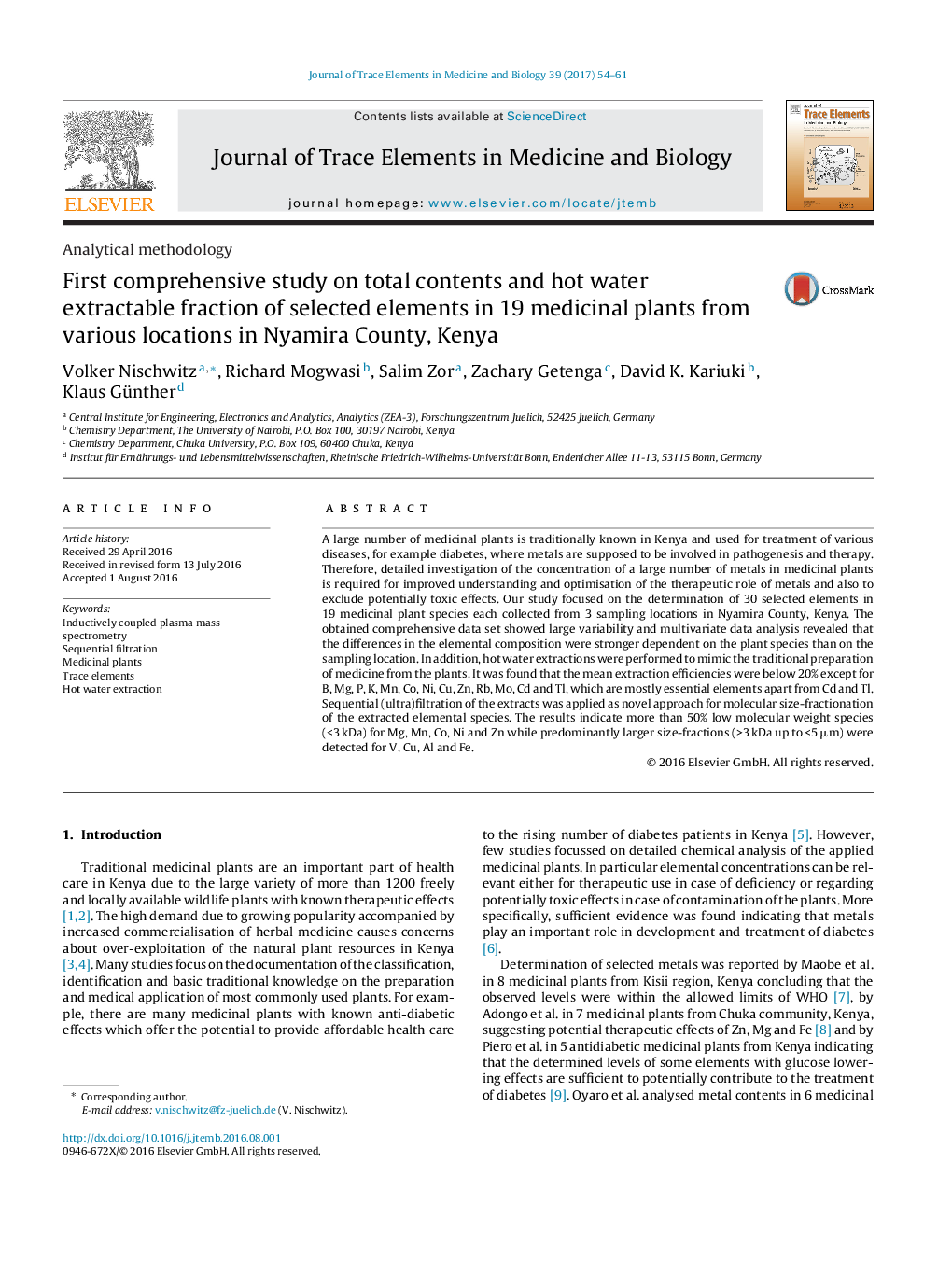| کد مقاله | کد نشریه | سال انتشار | مقاله انگلیسی | نسخه تمام متن |
|---|---|---|---|---|
| 1226320 | 1494817 | 2017 | 8 صفحه PDF | دانلود رایگان |
• Comprehensive study on elemental contents in medicinal plants from Kenya exceeding the number of samples and elements compared to previous studies.
• Comparison of samples of the same plant species collected from different locations using multivariate data analysis.
• Determination of the elemental extraction efficiencies for hot water treatment of the plants to estimate metal dose in traditionally prepared medicine.
• Sequential (ultra)filtration of aqueous plant extracts for fractionation of the elemental species according to their molecular size.
A large number of medicinal plants is traditionally known in Kenya and used for treatment of various diseases, for example diabetes, where metals are supposed to be involved in pathogenesis and therapy. Therefore, detailed investigation of the concentration of a large number of metals in medicinal plants is required for improved understanding and optimisation of the therapeutic role of metals and also to exclude potentially toxic effects. Our study focused on the determination of 30 selected elements in 19 medicinal plant species each collected from 3 sampling locations in Nyamira County, Kenya. The obtained comprehensive data set showed large variability and multivariate data analysis revealed that the differences in the elemental composition were stronger dependent on the plant species than on the sampling location. In addition, hot water extractions were performed to mimic the traditional preparation of medicine from the plants. It was found that the mean extraction efficiencies were below 20% except for B, Mg, P, K, Mn, Co, Ni, Cu, Zn, Rb, Mo, Cd and Tl, which are mostly essential elements apart from Cd and Tl. Sequential (ultra)filtration of the extracts was applied as novel approach for molecular size-fractionation of the extracted elemental species. The results indicate more than 50% low molecular weight species (<3 kDa) for Mg, Mn, Co, Ni and Zn while predominantly larger size-fractions (>3 kDa up to <5 μm) were detected for V, Cu, Al and Fe.
Journal: Journal of Trace Elements in Medicine and Biology - Volume 39, January 2017, Pages 54–61
